What comes to mind when you hear the words “Latvian verbs”? For most, it’s plain and boring grammatical tables you needed to memorise at Latvian school.
As a 16-year-old, attending Latvian school in Melbourne, and having to look at these tables every week, I was convinced that this challenging part of Latvian grammar could be digitalised to run on computers. That was thirty years ago when personal desktop computers first began to appear in schools, and I longed for the day to try out my new idea – even if it meant sneaking into the computer room after classes.
Fast forward to April, 2021 and the latest version of Latvian Verbs for iPhones and iPads is now available. It is a major upgrade after a 5-year hiatus – completely redesigned and redeveloped! The valuable feedback received from our users worldwide means that it is now even easier and friendlier to use.
To help illustrate how Latvian Verbs works, let’s look at the verb nopirkt (to buy) in the past tense:
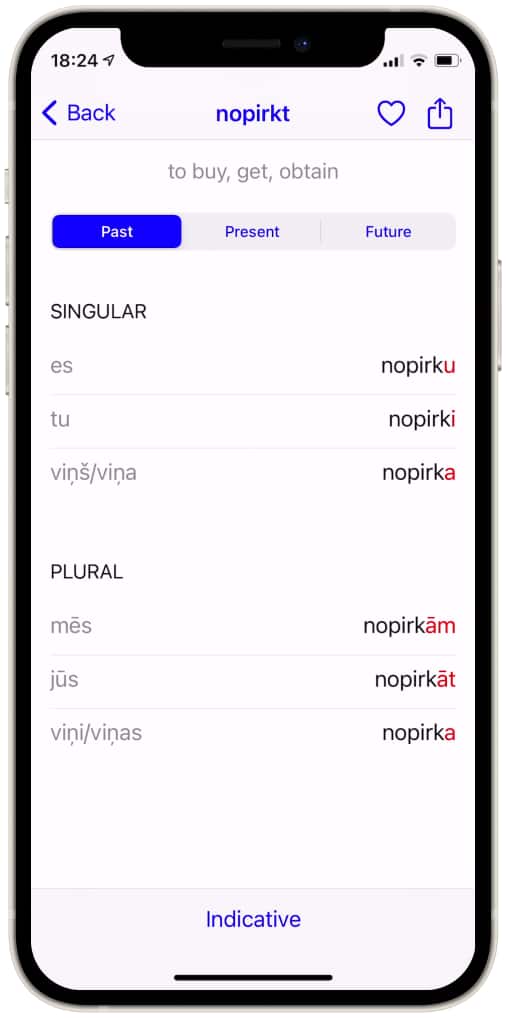
The prefix is no, the verb stem is pirk with the suffix t. Depending upon the person (es, tu, viņš.. viņas) the suffix changes quite predictably and is shown highlighted in red.
Changing to the future tense, we can see a similar pattern: prefix, stem and endings highlighted in red.

In the present tense, it becomes trickier. In our example, the verb stem has changed from pirk to pērk, in the 2nd person singular, the stem ending changes from k -> c and there is no longer a vowel suffix.
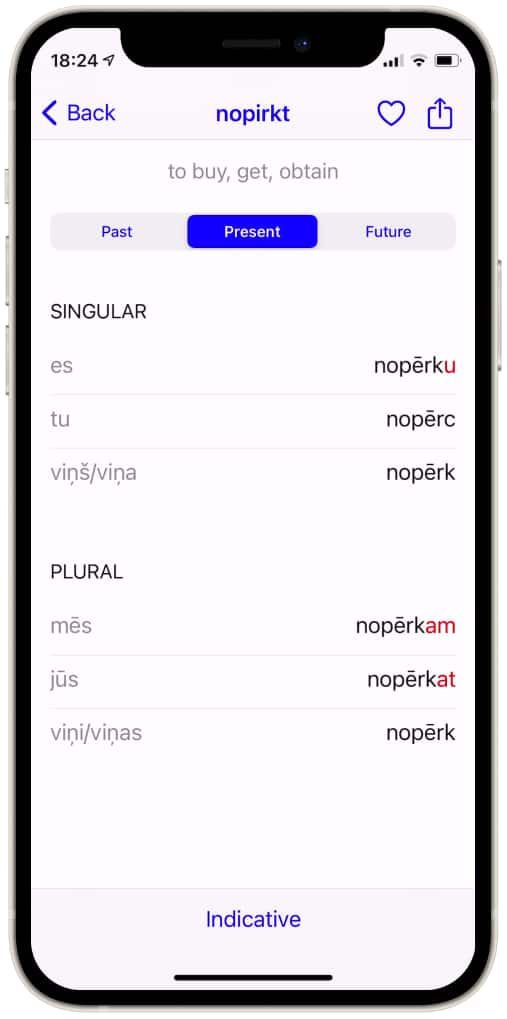
If you tap on nopirkt you will get additional useful information about this verb. The classification provides hints on which conjugation rules to apply. The 1st conjugation refers to all verbs where the verb stem is only one syllable (there are also 2nd and 3rd conjugation verbs that end in -āt, -īt, -ēt, -ot, -ūt and have two or more syllables). The 1st conjugation is the most complex and is further divided into 5 groups – nopirkt belongs to the 2nd group and other similar verbs are listed as a reference. The prefixes section shows the most popular prefixes that can be used with the base verb pirkt. Changing a prefix will often change the overall verb meaning as well.
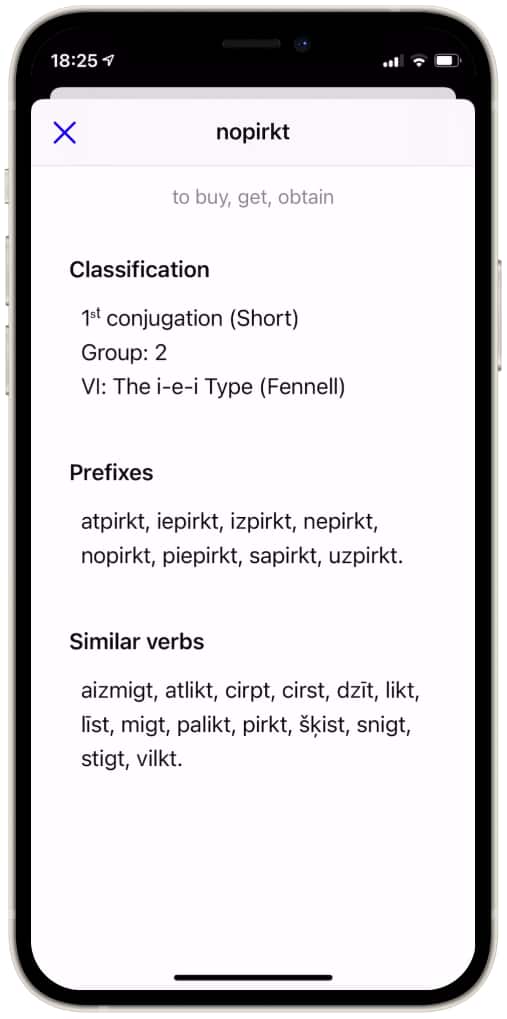
If you need help with the pronunciation of the verb forms, tap on the share icon, select the Izrunā ar Tildes Balsi option (this is a free App download from the AppStore) and listen to the audio. Alternatively, you can share the verb with others as well as mark it as a favourite for future reference.
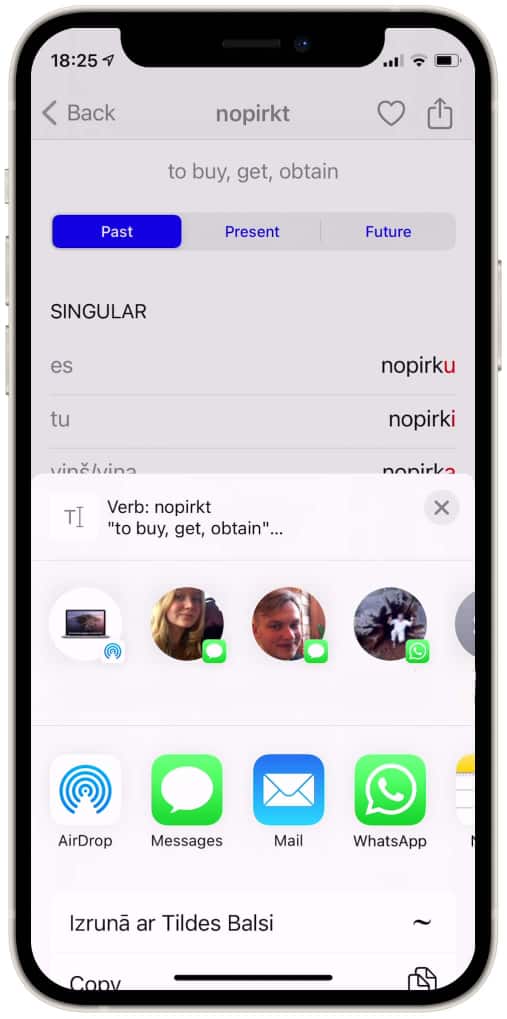
The Lists section provides the top 50 and top 100 Latvian verbs and, as with all languages, there are also exceptions with additional notes that you can study further.
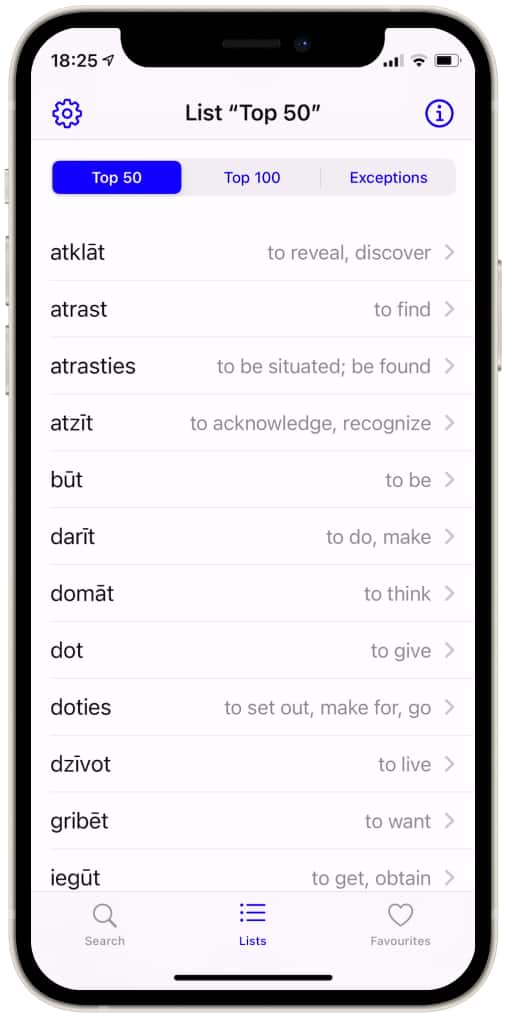
For more advanced learners, tap on the settings icon and choose the palatalised r and open/closed e options. The compound tense and passive voice (beginners should avoid the passive voice) are off by default. Switching these on reveals the complexity of Latvian verbs.
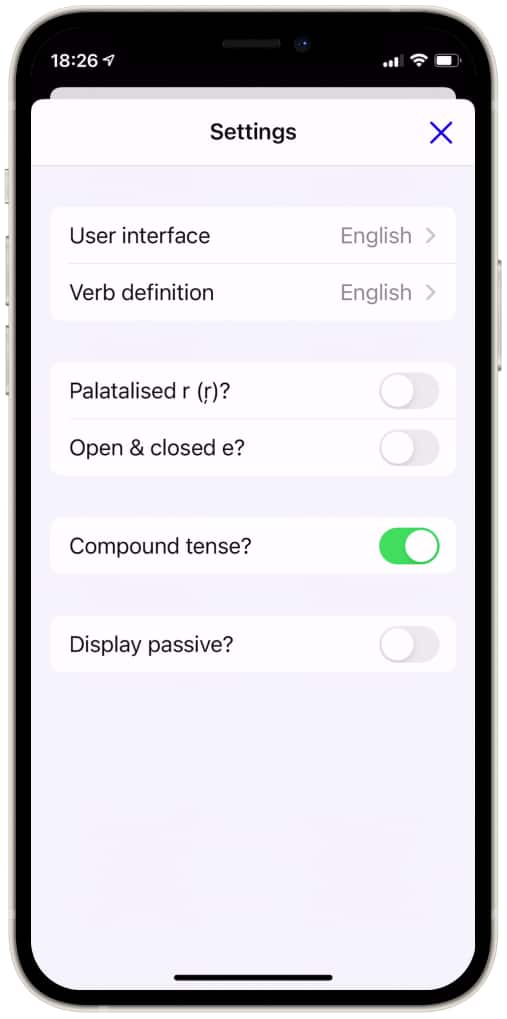
Advanced users can also choose from indicative, relative, conditional, debitive and imperative moods to further explore the many different Latvian verb forms.

All of the above works well on iPads in portrait as well as landscape modes.
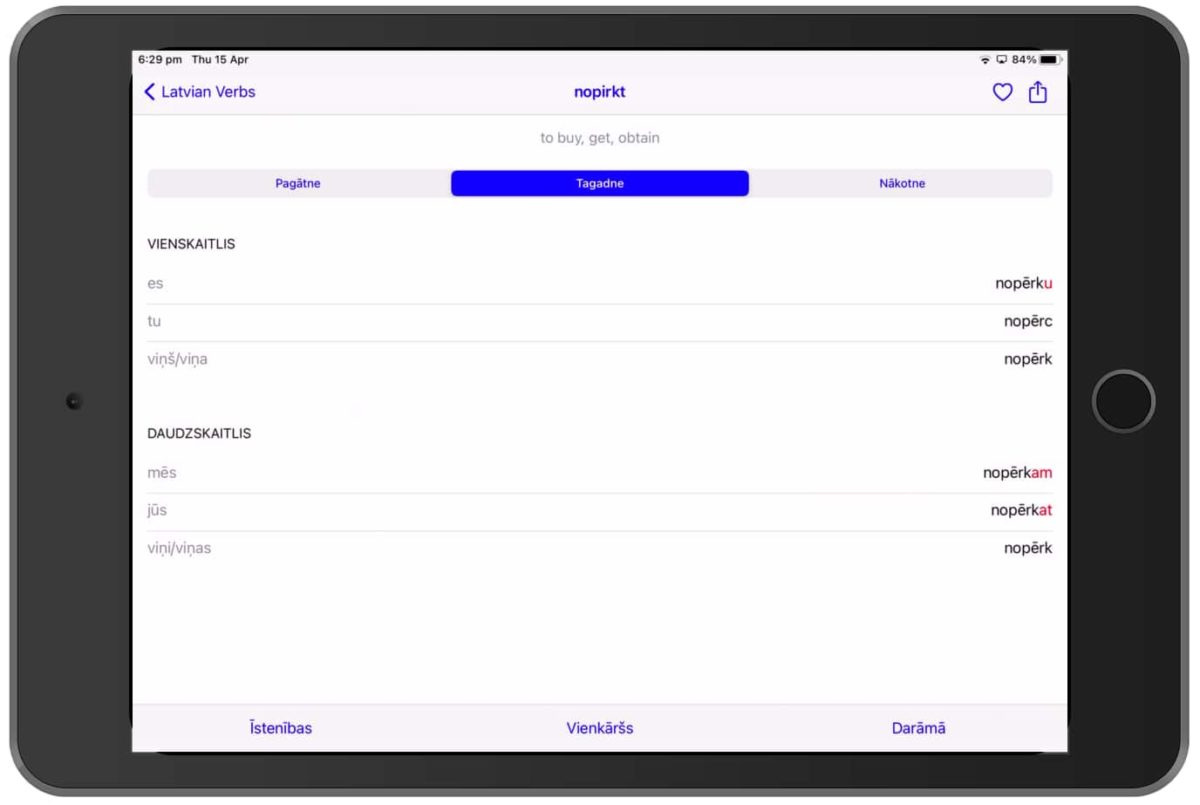
To download Latvian Verbs from the AppStore just search for “Latvian Verbs”. If you would like to provide feedback or have any questions on Latvian Verbs, please use the contact link through the App or post on the Latvian Verbs Facebook page.



